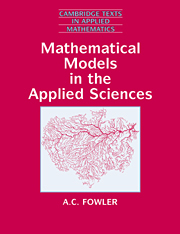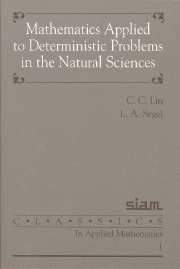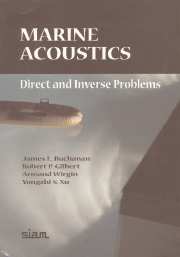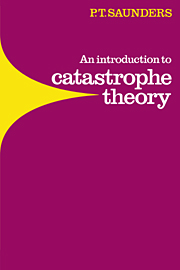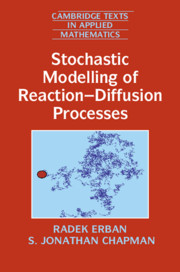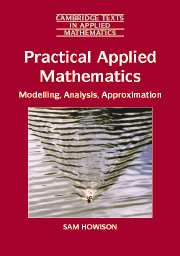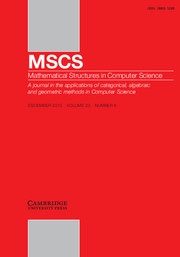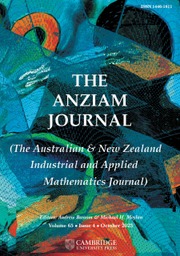Introduction to Applied Mathematics
£73.99
- Author: Gilbert Strang, Massachusetts Institute of Technology
- Date Published: January 1986
- availability: Temporarily unavailable - available from December 2024
- format: Hardback
- isbn: 9780961408800
£
73.99
Hardback
Looking for an inspection copy?
This title is not currently available on inspection
-
Renowned applied mathematician Gilbert Strang teaches applied mathematics with the clear explanations, examples and insights of an experienced teacher. This book progresses steadily through a range of topics from symmetric linear systems to differential equations to least squares and Kalman filtering and optimization. It clearly demonstrates the power of matrix algebra in engineering problem solving. This is an ideal book (beloved by many readers) for a first course on applied mathematics and a reference for more advanced applied mathematicians. The only prerequisite is a basic course in linear algebra.
Read more- Published in 1986, this text remains up-to-date and a classic
- Aids understanding through illuminating practical examples
- The text is supplemented by exercises and solutions, assisting the reader's grasp of the material
Customer reviews
Not yet reviewed
Be the first to review
Review was not posted due to profanity
×Product details
- Date Published: January 1986
- format: Hardback
- isbn: 9780961408800
- length: 760 pages
- dimensions: 243 x 169 x 40 mm
- weight: 1.23kg
- availability: Temporarily unavailable - available from December 2024
Table of Contents
1. Symmetric Linear Systems:
1.1 Introduction
1.2 Gaussian elimination
1.3 Positive definite matrices
1.4 Minimum principles
1.5 Eigenvalues and dynamical systems
1.6 A review of matrix theory
2. Equilibrium Equations:
2.1 A framework for the applications
2.2 Constraints and Lagrange multipliers
2.3 Electrical networks
2.4 Structures in equilibrium
2.5 Least squares estimation and the Kalman filter
3. Equilibrium in the Continuous Case:
3.1 One-dimensional problems
3.2 Differential equations of equilibrium
3.3 Laplace's equation and potential flow
3.4 Vector calculus in three dimensions
3.5 Equilibrium of fluids and solids
3.6 Calculus of variations
4. Analytical Methods:
4.1 Fourier series and orthogonal expansions
4.2 Discrete Fourier series and convolution
4.3 Fourier integrals
4.4 Complex variables and conformal mapping
4.5 Complex integration
5. Numerical Methods:
5.1 Linear and nonlinear equations
5.2 Orthogonalization and eigenvalue problems
5.3 Semi-direct and iterative methods
5.4 The finite element method
5.5 The fast Fourier transform
6. Initial-Value Problems:
6.1 Ordinary differential equations
6.2 Stability and the phase plane and chaos
6.3 The Laplace transform and the z-transform
6.4 The heat equation vs. the wave equation
6.5 Difference methods for initial-value problems
6.6 Nonlinear conservation laws
7. Network Flows and Combinatorics:
7.1 Spanning trees and shortest paths
7.2 The marriage problem
7.3 Matching algorithms
7.4 Maximal flow in a network
8. Optimization:
8.1 Introduction to linear programming
8.2 The simplex method and Karmarkar's method
8.3 Duality in linear programming
8.4 Saddle points (minimax) and game theory
8.5 Nonlinear optimization
Software for scientific computing
References and acknowledgements
Solutions to selected exercises
Index.
Sorry, this resource is locked
Please register or sign in to request access. If you are having problems accessing these resources please email [email protected]
Register Sign in» Proceed
You are now leaving the Cambridge University Press website. Your eBook purchase and download will be completed by our partner www.ebooks.com. Please see the permission section of the www.ebooks.com catalogue page for details of the print & copy limits on our eBooks.
Continue ×Are you sure you want to delete your account?
This cannot be undone.
Thank you for your feedback which will help us improve our service.
If you requested a response, we will make sure to get back to you shortly.
×

